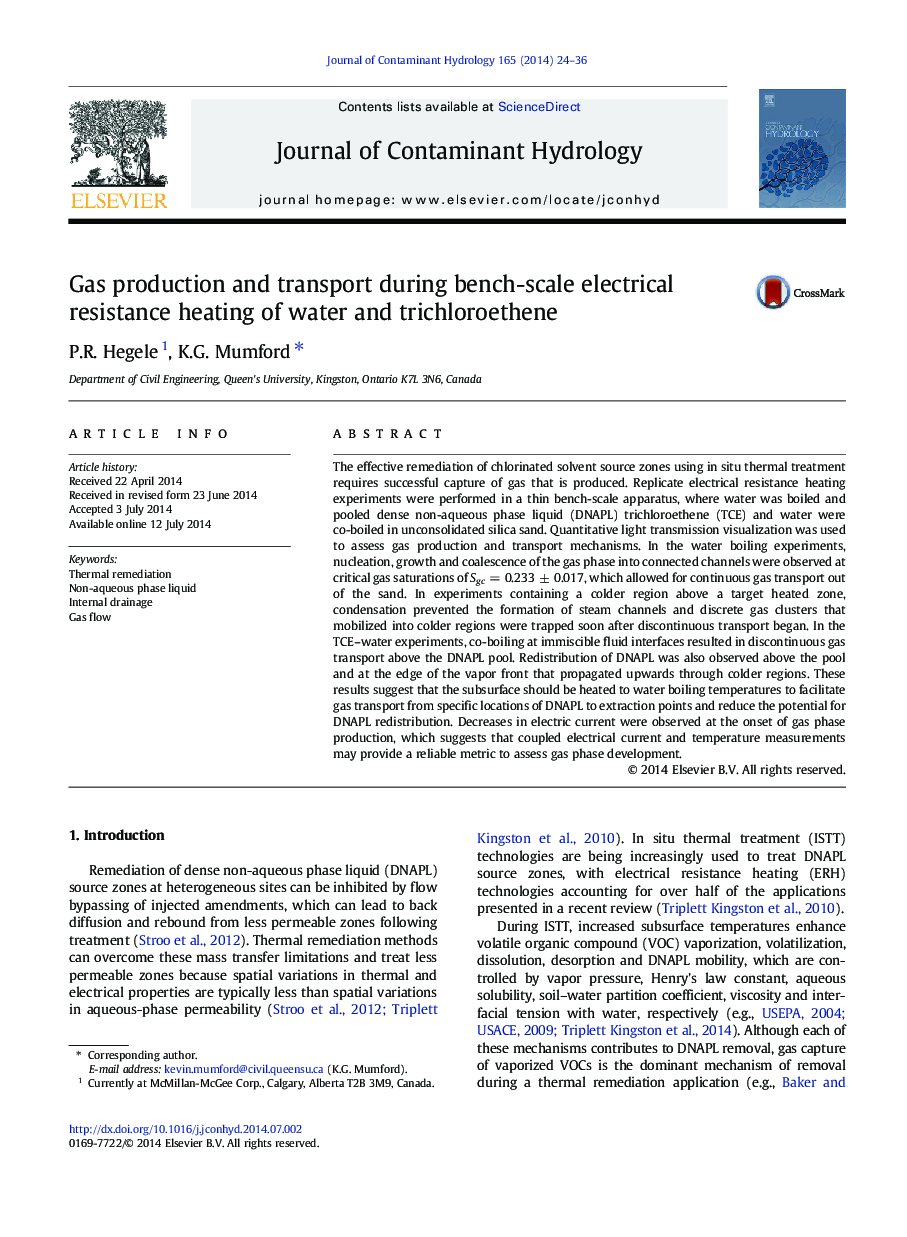| Article ID | Journal | Published Year | Pages | File Type |
|---|---|---|---|---|
| 4546522 | Journal of Contaminant Hydrology | 2014 | 13 Pages |
•Laboratory experiments of electrical resistance heating of water and trichloroethene•Light transmission imaging showed continuous and discontinuous gas flow.•Gas formation displaced DNAPL from initial pool location.•Condensation of steam and VOC vapor in colder regions limited gas flow.•May infer gas formation from combined measurements of current and temperature
The effective remediation of chlorinated solvent source zones using in situ thermal treatment requires successful capture of gas that is produced. Replicate electrical resistance heating experiments were performed in a thin bench-scale apparatus, where water was boiled and pooled dense non-aqueous phase liquid (DNAPL) trichloroethene (TCE) and water were co-boiled in unconsolidated silica sand. Quantitative light transmission visualization was used to assess gas production and transport mechanisms. In the water boiling experiments, nucleation, growth and coalescence of the gas phase into connected channels were observed at critical gas saturations of Sgc = 0.233 ± 0.017, which allowed for continuous gas transport out of the sand. In experiments containing a colder region above a target heated zone, condensation prevented the formation of steam channels and discrete gas clusters that mobilized into colder regions were trapped soon after discontinuous transport began. In the TCE–water experiments, co-boiling at immiscible fluid interfaces resulted in discontinuous gas transport above the DNAPL pool. Redistribution of DNAPL was also observed above the pool and at the edge of the vapor front that propagated upwards through colder regions. These results suggest that the subsurface should be heated to water boiling temperatures to facilitate gas transport from specific locations of DNAPL to extraction points and reduce the potential for DNAPL redistribution. Decreases in electric current were observed at the onset of gas phase production, which suggests that coupled electrical current and temperature measurements may provide a reliable metric to assess gas phase development.
